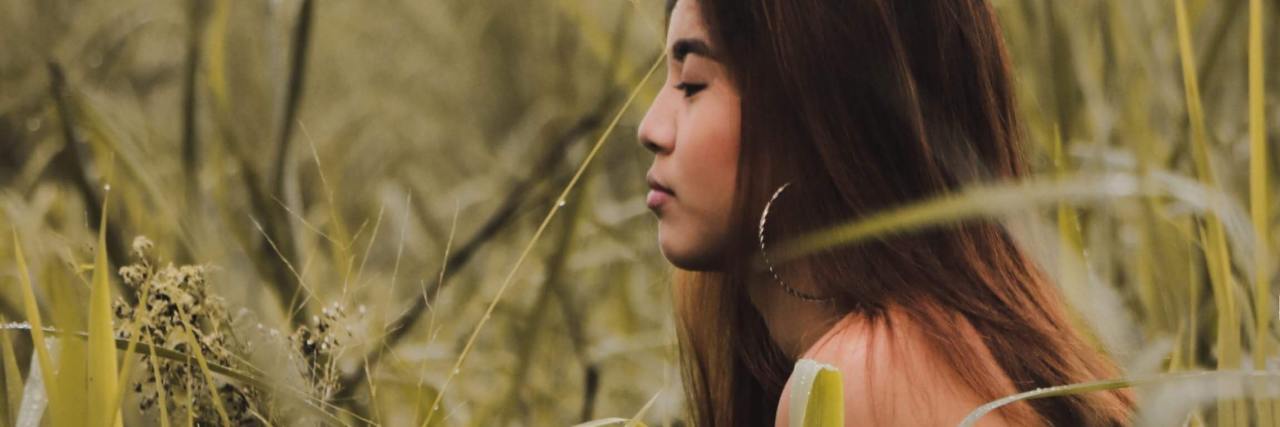“Grass is Greener Syndrome” is no joke. People often regard this issue with a quick wave of the hand: “Oh, you always think the grass is greener on the other side.” However, for people who struggle with this issue, it is incredibly frustrating and exhausting, mentally and emotionally. It tends to wreak havoc in various areas of people’s lives, especially in relationships, career or where to live, as well as other areas.
One of my main specialties as a psychotherapist is working with people all over the world on this particular issue. Part of what makes the “grass is greener” struggle so difficult is that it’s actually a collection of underlying psychological and emotional processes that all come together to create the larger struggle, which is experienced as “Grass is Greener Syndrome.”
While there are many components that blend together to create the foundation of “Grass is Greener Syndrome,” and they are all worthy of their own discussion (which will get their own posts over time), for now, let’s focus on the role of your needs and the starvation of needs.
How Does a Need Become Starved?
Everyone has needs, emotionally and practically. Some needs are more of a priority than others. Some are deal-breakers in various ways — like wanting to get married, or have children, or live in an area that has certain amenities, or work in a job that treats you a certain way, or that you find fulfilling, to be with someone who respects and supports your ambitions, etc. The list of possible needs can go on and on.
However, what happens when you’re in a situation where only some of your most important needs can be met while others aren’t? Let’s say you’re in a relationship with someone who satisfies several things that are important to you. However, at the same time, you have other important needs that are essentially left untouched. Maybe you have a partner who is steady and secure, which perhaps is important to you, but struggles with the lack of passion (and other areas), which you also want in a partner.
For the “grass is greener” thinker, this is an incredibly tough dilemma. The more a need goes unfulfilled, the more starved this piece of you begins to feel, and the more it begins to overshadow those needs that are actually being met. Eventually, the needs that aren’t being met become so starved out that you feel truly compelled to replace what you currently have with what you’re not getting.
In the example above, the starvation of passion begins to completely overshadow the steady and secure qualities that are also important to you (it may resemble a feeling of deadness in the relationship and being drawn towards people who reflect what you’re missing). It begins to feel like you’re losing an important piece of yourself, and you feel that you won’t survive without it.
Now, this wouldn’t be such a huge problem if you went to a new relationship and satisfied those needs that have been starved, resulting in more happiness and fulfillment. However, for the person stuck in the “grass is greener” process, what tends to happen next is that those needs are satisfied and fulfilled for a brief time in the new relationship. And then, the needs that are now not being fulfilled in the current situation (even if they were in the previous situation) begin to get starved out. In the above example, you feed the hunger for passion, but end up losing the stability and security as part of the tradeoff.
The “All-or-Nothing” Problem
“Grass is Greener Syndrome” tends to be a very black-and-white process. Some needs are fully being met, and other needs are totally neglected. There’s very little room or tolerance in the “grass is greener” process for a middle ground and emotional compromise without feeling like you’re starving in one area or another. It can become difficult to differentiate between needs and desires, or accepting varying degrees of satisfaction for the purpose of achieving greater balance. To be clear, this isn’t out of unwillingness; it’s a part of the “grass is greener” process.
This black-and-white process continuously feeds the “grass is greener” issue. The dynamic of starvation-fulfillment and restarvation-refulfillment continues to cycle until the “grass is greener” process itself can be shifted, as a whole. What makes things even more difficult is how much more is going on in “Grass is Greener Syndrome” than just this starvation mechanism. Consider the starvation of needs to be one layer of the overall foundation of the “grass is greener” issue.
Generally, by the time people start to experience the symptoms of “Grass is Greener Syndrome,” the underlying foundation has been well-established and very difficult to break on your own. When people come to me, they are often stressed, feeling hopeless, frustrated and burned out by the toll this issue has taken on them.
If there’s any one piece of advice I can give someone who’s struggling with “grass is greener” patterns, it’s to not be afraid to seek outside help. Because of the deep multilayered complexity of this issue, and because of the intensity of the internal all-or-nothing tug of war, it’s very hard to be able to pull oneself out of it without unintentionally repeating the pattern again. It’s hard to have a clear and sound thought process about what is actually in your best interest when so emotionally entrenched in the depth of the issue.
This all being said, as complex as it may be, it is very possible to overcome “Grass is Greener Syndrome.” I’ve seen many people come through the other end of this struggle. It may be hard to imagine shifting the cycle from where you are now, but I assure you it isn’t hopeless.
Visit www.nathanfeiles.com for more information on Nathan’s practice.
Photo by Dustin Dagamac on Unsplash

